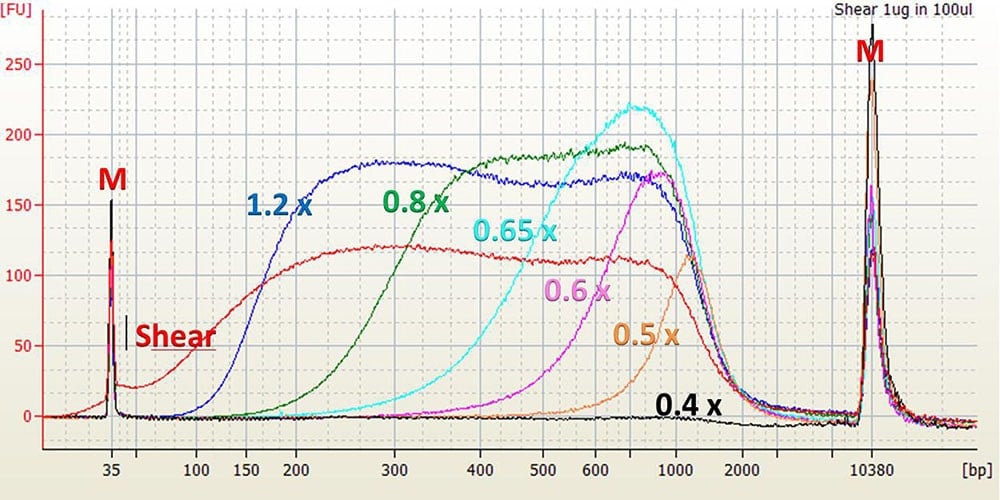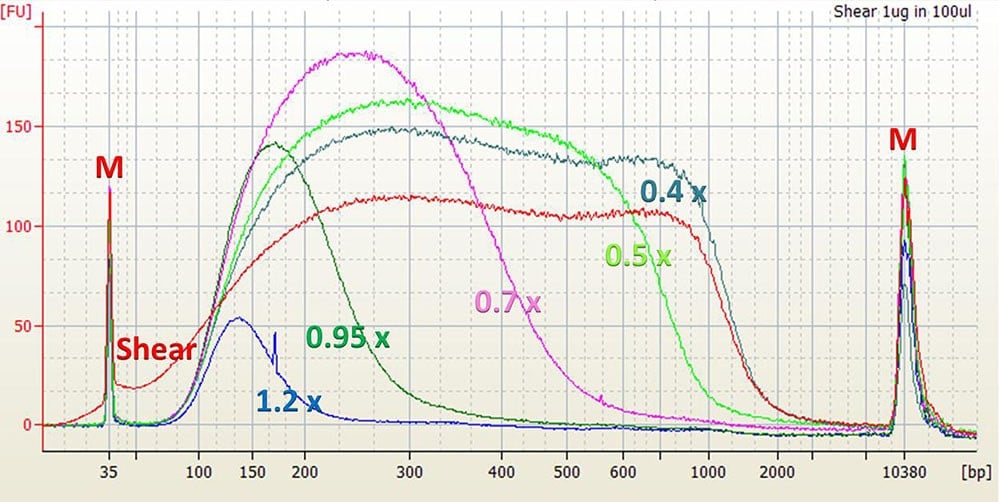FAQ: How to perform size selection with AMPure XP bead-based reagent?
The AMPure XP reagent is not the reagent we recommend using for size selection even though some suppliers have developed DNA size selection protocols for it. We do not guarantee performance or support this application. The AMPure XP reagent's intended use is for performing DNA cleanup steps in different genomic applications like sequencing, qPCR/ddPCR/PCR, microarrays, and other enzymatic reactions.
For accurate and consistent DNA size selection we recommend using our SPRIselect reagent, which is purposefully designed and validated for this application.
Moreover, this reagent is stable at room temperature, which allows to start cleanup steps without calibrating to room temperature and frees up 4⁰C storage space. Visit this page to compare SPRIselect and AMPure XP reagents in details.
The bead ratio, used in the SPRIselect size selection protocol, depends on the side of selection and the selection points:
Agilent High Sensitivity DNA Chip Electropherogram: (Left) Left Side Size Selection with SPRIselect reagent, (Right) Right Side Size Selection with SPRIselect reagent. M = upper and lower markers for High Sensitivity DNA chip. Shear = 1 μL of 20 ng/μL input control sample in water. 1.2x to 0.4x = 1 μL of shear, size selected with given ratio of the SPRIselect reagent volume to the sample volume.
To learn more recommendations on performing DNA size selection, refer to the SPRIselect protocol.
Products and demonstrated applications are not intended or validated for use in diagnostic procedures.




